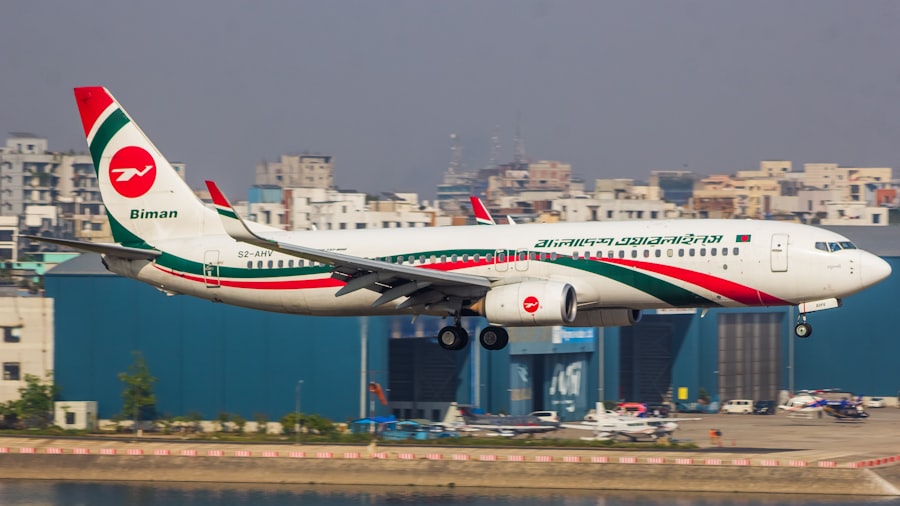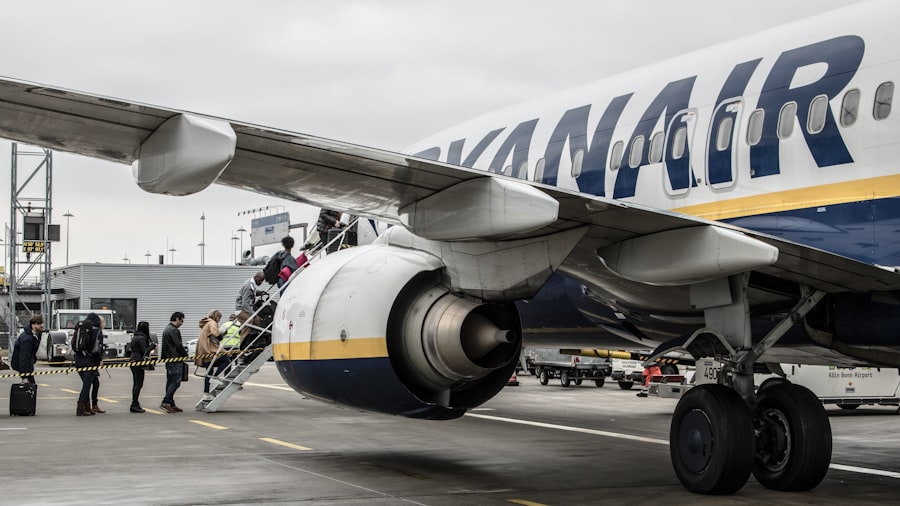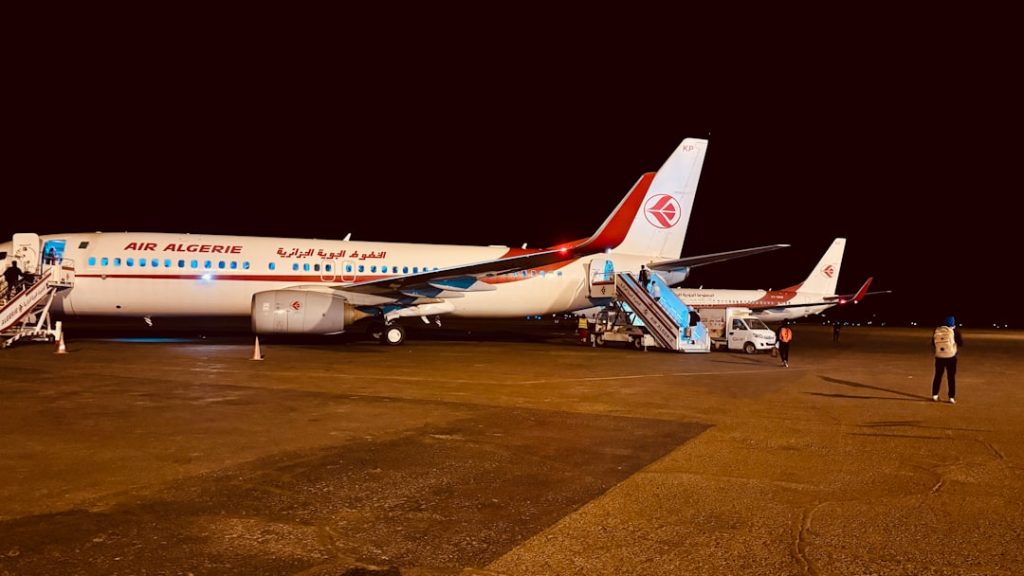The Boeing 737-800 is a member of the Next Generation (NG) series of the Boeing 737 family, which has been a cornerstone of commercial aviation since its inception in the late 1960s. Launched in 1994, the 737-800 was designed to bridge the gap between the smaller 737-700 and the larger 737-900, offering airlines a versatile aircraft capable of serving both short-haul and medium-haul routes efficiently. With its advanced technology, fuel efficiency, and operational flexibility, the 737-800 has become one of the most popular aircraft in the world, with thousands of units delivered to airlines globally.
The aircraft is powered by two CFM International CFM56-7B engines, which provide a balance of performance and efficiency. The 737-800 can accommodate between 162 to 189 passengers, depending on the airline’s configuration choices. Its design incorporates a range of aerodynamic improvements over its predecessors, including winglets that enhance fuel efficiency and reduce drag.
As a result, the Boeing 737-800 has established itself as a reliable workhorse for airlines, contributing significantly to the growth of air travel in both domestic and international markets.
Key Takeaways
- The Boeing 737-800 is a popular narrow-body aircraft known for its efficiency and reliability in commercial aviation.
- The exterior design and structure of the Boeing 737-800 features advanced aerodynamics and a durable airframe, contributing to its fuel efficiency and performance.
- The interior cabin of the Boeing 737-800 is designed for passenger comfort, with spacious seating, overhead storage, and modern amenities.
- The cockpit of the Boeing 737-800 is equipped with advanced avionics and technology, providing pilots with the tools they need for safe and efficient flight operations.
- The Boeing 737-800 offers impressive performance and range, making it suitable for both short-haul and long-haul flights, with a focus on fuel efficiency and operational flexibility.
Exterior Design and Structure
The exterior design of the Boeing 737-800 is characterized by its sleek lines and modern aesthetic, which reflect both functionality and style. The aircraft features a distinctive nose that tapers gently, contributing to its aerodynamic profile. The wings are equipped with winglets that not only enhance fuel efficiency but also provide a visually striking appearance.
These winglets are designed to reduce vortex drag at the wingtips, allowing for improved climb performance and reduced fuel consumption during cruise. The fuselage of the 737-800 is constructed from advanced aluminum alloys and composite materials, which contribute to its strength while keeping weight to a minimum. This lightweight structure is crucial for optimizing performance and fuel efficiency.
The aircraft’s dimensions include a length of approximately 129 feet and a wingspan of about 112 feet with winglets, making it well-suited for various airport operations. The landing gear is designed for robustness, allowing the aircraft to operate from a wide range of runways, including those with less-than-ideal surfaces.
Interior Cabin Features

The interior cabin of the Boeing 737-800 is designed with passenger comfort and operational efficiency in mind. Airlines have the flexibility to configure the cabin layout according to their specific needs, which can range from all-economy seating to mixed-class arrangements. Typically, the aircraft features a two-class configuration with business and economy classes, allowing airlines to cater to different market segments effectively.
Passenger amenities within the cabin include overhead storage bins that are spacious enough to accommodate larger carry-on luggage, enhancing convenience for travelers. The cabin is also equipped with modern lighting systems that can be adjusted to create a more pleasant atmosphere during flights. Additionally, many airlines have incorporated in-flight entertainment systems that offer passengers a variety of options, including movies, music, and games, further enhancing the overall travel experience.
Cockpit and Avionics
| Metrics | Value |
|---|---|
| Number of Cockpit Displays | 4 |
| Avionics System Weight | 1,200 lbs |
| Cockpit Voice Recorder Capacity | 2 hours |
| Avionics System Power Consumption | 500 watts |
The cockpit of the Boeing 737-800 is a marvel of modern aviation technology, featuring advanced avionics that enhance situational awareness and operational efficiency for pilots. The flight deck is equipped with large digital displays that provide critical flight information at a glance, allowing pilots to monitor various parameters without distraction. The use of fly-by-wire technology in certain systems contributes to improved handling characteristics and reduces pilot workload during complex maneuvers.
One notable feature of the cockpit is the incorporation of an Electronic Flight Instrument System (EFIS), which integrates navigation, communication, and flight management systems into a cohesive interface. This system allows for more precise navigation and better management of flight paths, particularly in busy airspace. Additionally, the cockpit is designed with ergonomics in mind, ensuring that controls are easily accessible and intuitive for pilots during flight operations.
Performance and Range
The Boeing 737-800 boasts impressive performance metrics that make it suitable for a wide range of flight operations. With a maximum takeoff weight (MTOW) of approximately 174,200 pounds, it can carry significant payloads over considerable distances. The aircraft has a maximum cruising speed of around Mach 0.79, allowing it to operate efficiently on both short-haul and medium-haul routes.
In terms of range, the 737-800 can cover distances of up to 2,935 nautical miles (about 5,436 kilometers) when fully loaded. This capability enables airlines to serve various international destinations without requiring frequent refueling stops. The aircraft’s performance is further enhanced by its efficient engines and aerodynamic design, which contribute to lower operating costs per seat mile compared to older aircraft models.
Passenger Comfort and Amenities

Passenger comfort is a key consideration in the design of the Boeing 737-800’s interior cabin. Airlines often equip their aircraft with comfortable seating options that provide adequate legroom and support for travelers on longer flights. Many airlines have adopted slimline seats that maximize space while still offering comfort, allowing for more seats without compromising passenger experience.
In addition to seating comfort, many airlines have invested in modern in-flight entertainment systems that cater to passenger preferences. These systems may include personal screens with on-demand movies and TV shows, as well as Wi-Fi connectivity for browsing the internet during flights. Furthermore, cabin crew are trained to provide exceptional service, ensuring that passengers feel valued throughout their journey.
The combination of comfortable seating, entertainment options, and attentive service contributes significantly to overall passenger satisfaction.
Safety and Emergency Features
Safety is paramount in aviation, and the Boeing 737-800 incorporates numerous features designed to protect passengers and crew during flights. The aircraft is equipped with advanced safety systems such as Traffic Collision Avoidance System (TCAS) and Ground Proximity Warning System (GPWS), which help prevent accidents by providing real-time alerts to pilots about potential hazards. In terms of emergency preparedness, the 737-800 features multiple exits strategically located throughout the cabin to facilitate quick evacuation in case of an emergency.
The aircraft is also equipped with inflatable slides at each exit for rapid egress. Additionally, safety briefings provided by cabin crew before takeoff ensure that passengers are aware of emergency procedures and exit locations. The robust design of the aircraft itself contributes to its safety record; it has undergone rigorous testing to meet stringent aviation safety standards set by regulatory authorities worldwide.
Maintenance and Operational Considerations
Maintenance plays a crucial role in ensuring the continued airworthiness of the Boeing 737-800 throughout its operational life. Airlines typically follow a comprehensive maintenance schedule that includes routine inspections, component replacements, and system checks to ensure optimal performance and safety. The aircraft’s design facilitates easier access to critical components for maintenance crews, reducing downtime and operational costs.
Operational considerations for airlines using the 737-800 include fuel efficiency strategies and route planning that maximize profitability while minimizing environmental impact. The aircraft’s efficient engines contribute to lower fuel consumption compared to older models, making it an attractive option for airlines looking to reduce operating expenses. Furthermore, many airlines are adopting sustainable practices by exploring alternative fuels and carbon offset programs as part of their commitment to environmental stewardship.
In conclusion, the Boeing 737-800 stands out as a versatile and reliable aircraft that has made significant contributions to commercial aviation since its introduction. Its combination of advanced technology, passenger comfort features, safety systems, and operational efficiency makes it a preferred choice for airlines around the world. As air travel continues to evolve, the Boeing 737-800 remains an integral part of many fleets, adapting to meet changing demands while maintaining its reputation as a trusted workhorse in aviation.


